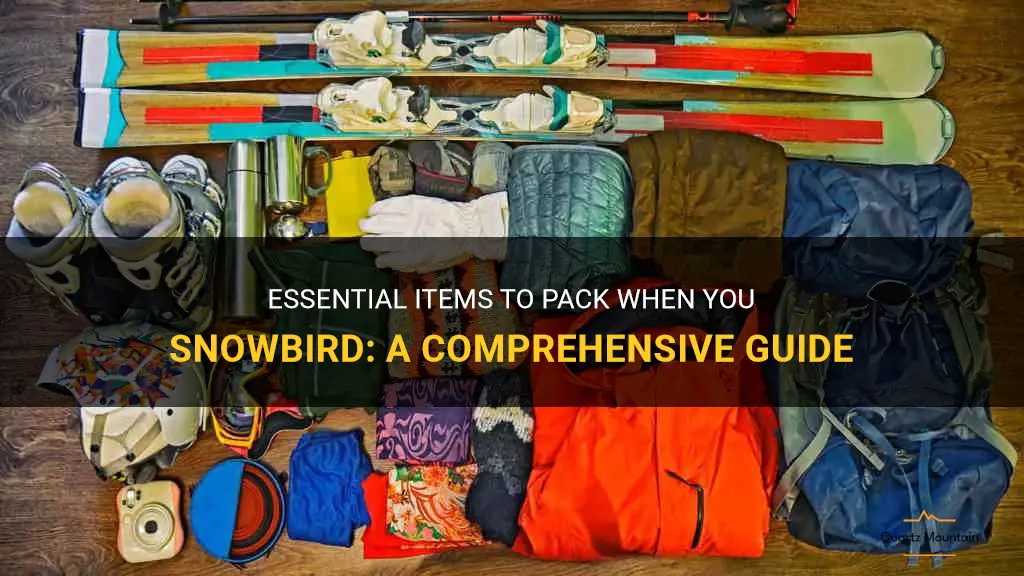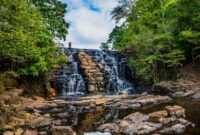Snowbird vacations represent a unique blend of extended travel and seasonal living, attracting individuals seeking warmer climates and a change of pace during the colder months. This comprehensive guide delves into the planning, logistics, and lifestyle associated with these increasingly popular winter escapes, exploring everything from ideal destinations and accommodation options to budgeting strategies and health considerations. We aim to provide a complete picture of the snowbird experience, assisting potential travelers in making informed decisions and maximizing their enjoyment.
From choosing the perfect location amongst popular destinations like Arizona, Florida, or Southern California, to understanding the nuances of seasonal pricing and activity availability, we’ll cover all the essentials. We’ll also discuss the cultural exchange between snowbirds and local communities, and the economic impact of this seasonal migration. Whether you’re a seasoned snowbird or considering your first winter escape, this guide will be your valuable companion.
Defining “Snowbird Vacations”
Snowbird vacations represent a specific type of seasonal migration, primarily undertaken by retirees and older adults, who escape harsher winter climates for warmer, more temperate locations. This temporary relocation is often for several months, typically spanning from late fall to early spring. The motivations behind this seasonal travel are multifaceted, and extend beyond simply seeking warmer weather.
Snowbird vacations differ significantly from other winter getaways, such as short ski trips or holiday celebrations. While other winter escapes are usually brief, focused events, snowbird vacations involve establishing a temporary residence, often renting or owning a second home, and integrating into the local community, albeit temporarily. The focus is less on a specific activity and more on a lifestyle change, embracing a different climate and pace of life for an extended period.
Snowbird Demographics and Motivations
The typical snowbird is often a retired individual or couple, possessing the financial means and the time to undertake such a lengthy relocation. Many are drawn by the desire to escape harsh winter weather conditions, such as snow, ice, and freezing temperatures, common in northern states and Canadian provinces. Beyond escaping the cold, motivations often include better health outcomes – enjoying more outdoor activity in a warmer climate, and a lower cost of living in certain destinations. Improved overall well-being, social interaction within snowbird communities, and a change of scenery also contribute significantly to the appeal.
Popular Snowbird Destinations and Their Characteristics
Several locations have become popular hubs for snowbirds, each offering unique attractions. Florida, particularly the southwest coast, is a dominant destination, known for its extensive coastline, warm climate, and abundance of recreational activities. Arizona attracts snowbirds with its sunny deserts, numerous golf courses, and vibrant cultural scene, particularly in cities like Scottsdale and Tucson. Southern California offers a more varied landscape, with coastal areas like San Diego and inland desert regions like Palm Springs attracting different segments of the snowbird population. These locations all offer amenities specifically tailored to snowbirds, including affordable housing options, accessible healthcare facilities, and thriving social communities.
Duration and Timing of Snowbird Vacations
Snowbirds, those who escape the harsh winters of northern climates, vary considerably in their vacation lengths and timing. The duration of their stay is largely influenced by factors such as retirement plans, personal finances, and the specific climate they seek to enjoy. Similarly, the timing is dictated by the onset and duration of winter in their home locations and the availability of desirable accommodations in their chosen warmer destinations.
The typical length of a snowbird vacation is highly variable. Some snowbirds might only stay for a few weeks, perhaps escaping the coldest months, while others might spend several months, effectively establishing a second home for the winter. This fluidity makes defining a precise “average” challenging.
Seasonal Aspects and Typical Activities
The seasonal aspects significantly impact the snowbird experience, influencing both the length of stay and the types of activities undertaken. Peak season generally aligns with the coldest months in northern states and Canada (typically December through February), while the shoulder seasons (November and March/April) offer a less crowded, often more affordable, alternative.
| Season | Average Length of Stay | Typical Activities | Example Locations (Illustrative) |
|---|---|---|---|
| Peak Season (Dec-Feb) | 2-3 months | Golfing, swimming, hiking, bird watching, socializing with other snowbirds, attending community events, exploring local attractions. | Florida (South), Arizona (Sun City), Southern California |
| Shoulder Season (Nov, Mar-Apr) | 1-2 months | Similar activities as peak season, but with potentially fewer crowds and lower prices. Some outdoor activities may be limited depending on weather. | Texas (Rio Grande Valley), Southern Nevada (Las Vegas area – milder weather), Coastal South Carolina |
| Off-Season (Oct, May) | 1-4 weeks (highly variable) | Shorter trips focused on specific events or activities, exploring new locations, or a quick escape from inclement weather. | Various locations depending on specific interests and weather patterns. Could include destinations further south for warmth. |
Accommodation and Lifestyle
Snowbirds enjoy a diverse range of accommodation options and lifestyles, shaped by their budgets, preferences, and the length of their stay. The choice of accommodation significantly impacts their daily routines and social interactions, creating a unique experience for each individual.
Snowbird Accommodation Options
The selection of housing for snowbirds is broad, catering to various needs and financial capabilities. Three common choices are condominiums, recreational vehicles (RVs), and traditional rentals. Condominiums offer a balance between convenience and comfort, often featuring amenities like swimming pools, fitness centers, and community spaces. RVs provide a more mobile and independent experience, allowing snowbirds to explore different locations throughout their stay. Traditional rentals, such as houses or apartments, offer a more home-like setting and potentially more space than condos. Each option presents trade-offs regarding cost, convenience, and level of independence. For instance, condos typically offer more amenities but may be more expensive than rentals. RVs provide flexibility but may lack the comfort and space of a traditional home.
Typical Snowbird Lifestyle and Daily Routines
The daily life of a snowbird is often characterized by a blend of relaxation, recreation, and social engagement. Many snowbirds enjoy leisurely mornings, perhaps starting with a light exercise, followed by breakfast and catching up on news or correspondence. Afternoons might be dedicated to exploring local attractions, engaging in hobbies, or participating in community activities. Evenings frequently involve socializing with fellow snowbirds, dining out, or attending local events. The level of activity varies greatly depending on individual preferences and health. Some snowbirds maintain a busy schedule, while others opt for a more relaxed pace. This flexibility is a significant appeal of the snowbird lifestyle.
Sample Daily Itinerary for a Snowbird in Florida
Let’s consider a hypothetical snowbird, Mary, spending the winter months in Sarasota, Florida. Mary’s daily routine could look something like this:
8:00 AM: Wake up, light stretching and yoga on her condo balcony overlooking the Gulf of Mexico.
9:00 AM: Breakfast at a local café, enjoying fresh orange juice and a bagel.
10:00 AM: Visit the Sarasota Farmers Market, browsing local produce and crafts.
12:00 PM: Lunch at a casual waterfront restaurant.
1:00 PM: Relax by the pool at her condo complex.
3:00 PM: Attend a pottery class at a local art center.
6:00 PM: Happy hour with friends at a nearby bar.
7:30 PM: Dinner at an Italian restaurant with friends from her condo building.
9:00 PM: Relax at her condo, reading a book before bed.
This is just one example; many variations exist depending on personal preferences and the specific location. The key is the flexibility to structure each day according to individual needs and desires. This balance of relaxation, social interaction, and engagement in local activities defines the appeal of the snowbird lifestyle.
Last Word
Embarking on a snowbird vacation offers a rewarding opportunity for rejuvenation, exploration, and connection. Careful planning, encompassing budgeting, accommodation selection, and understanding potential health concerns, ensures a smooth and enjoyable experience. By considering the unique aspects of snowbird life – the extended stays, the integration with local communities, and the diverse range of activities available – individuals can tailor their winter escape to create lasting memories and a fulfilling seasonal adventure. This guide provides the foundation for a successful and enriching snowbird experience, encouraging readers to embrace the unique lifestyle and benefits of this increasingly popular travel trend.




